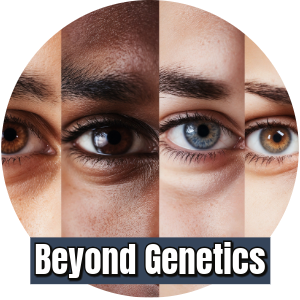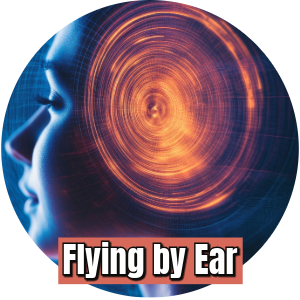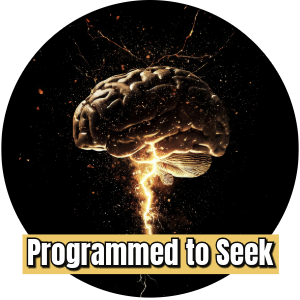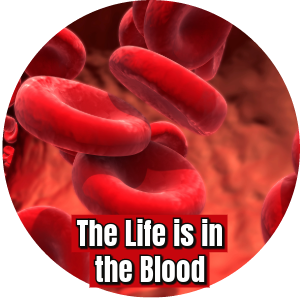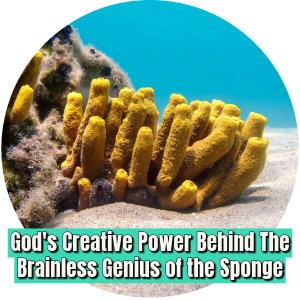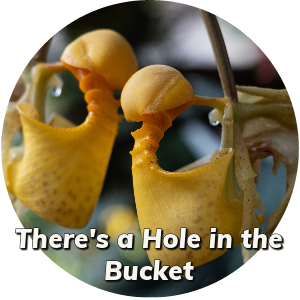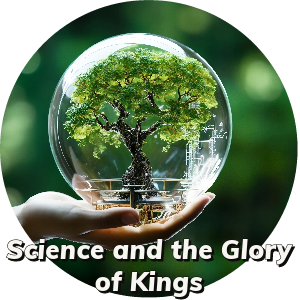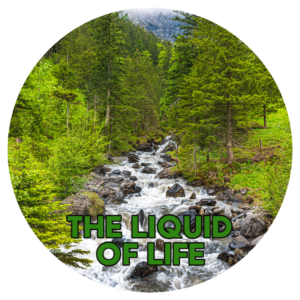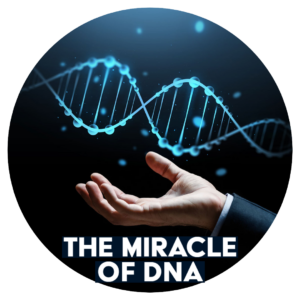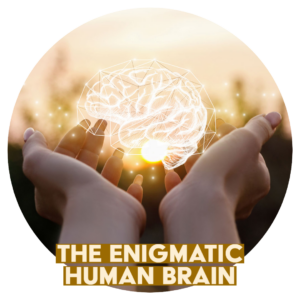
Dandelion seeds are some of the best fliers in nature, catching the wind and spreading as far as 150 kilometers (about 93 miles)—all without generating a single pound of thrust. Each seed is harnessed by a long stem to a parachute-like canopy made of hair-like bristles. The flower seeds and their parachutes make up the puffballs that children scatter into the wind. Recent research creates an intricate picture of these seeds, unmistakably engineered for flight.
Human genetics are powerful. Watching a growing son match his father’s stride or hearing a mother’s voice in her teen daughter can be striking. If you look at your hands, eyes, hair, and many other features, one biological mother and one biological father clearly gave much of themselves to you. How we look on the outside and how we work on the inside is largely passed down from our parents.
Deep within your head, covered by the flap of cartilage and skin you call your ear, you have a navigation system. It may not tell you how to get to a grocery store in Peoria, Illinois, but it does tell you which way is up. Your brain’s perception of position and motion is actually accomplished through multiple systems, including horizon awareness from the eyes, stretch placed on nerves from connective tissues and joints, and even touch and pressure from your skin.
The drive to seek the feelings and satisfactions of pleasure or reward is an intricate response designed in your brain. The neural structure of the brain and the associated cascade of brain chemicals have been masterfully designed by a wise Creator. Just like infants and toddlers, you are deeply programmed to seek after constructive rewards on many levels.
American explorer Meriwether Lewis, serious and exacting, was awestruck upon first encountering the boundless plain that opened up to him in 1805. Under the summer sun, he faced “one continued level fertile plain as far as the eye can reach, in which there is not even a solitary tree or shrub to be seen” (Stephen Ambrose, Undaunted Courage, p. 216). On that plain, he found vast herds of elk, deer, buffalo, and pronghorn antelope.
My three-year-old daughter peered into the casket with me. Curious, her pigtails bobbing, she looked down at the once-familiar face, now just a lifeless mask. We were attending a funeral for a pastor I had known since I was a boy. The body of the vital, active pastor was now still and quiet in his casket, ears unhearing and eyes unseeing. The contrast between it and my energetic toddler was marked. All biological life has its limits, and we all are eventually reduced to a collection of bones in the grave.
The Apostle Paul in Acts 14:17 describes “rain from heaven” as a sign of God’s goodness that He provides as a witness to all of mankind. Rain is, indeed, an often-neglected blessing.
As you begin to read this article, a host of chemical processes are occurring throughout your body and brain. You contain a horde of cells undergoing chemical reactions every second. The number of cells in the human body is estimated at more than 30 trillion; even if each cell only averaged one chemical reaction per second, that would still be more than 30 trillion chemical reactions every second.
What comes to mind when we see ocean waves crashing against the shore? Do we think of raw power, unchecked? In fact, though seemingly wild and uncontrolled, these waves conceal an order found in the waters’ offshore movement.
On a recent beach trip, threading my way between the dunes and enjoying the ocean breeze, I heard a small child behind me call out, “Running on sand is hard!” I turned around and cheerfully said, “Of course it is! You’re running on tiny rocks!”
Have you ever considered: Why do we worship God? Is the human mind specifically designed to benefit from religious devotion? If so, what was our Creator’s purpose, and why does He want us to worship him? The answers may surprise you.
My wife and I recently moved to a small farm in southern Alberta, Canada, where we’ve found that living on a farm deepens one’s connection to God’s creation. There is also a lot of hard work—but sometimes those two things go together. For example, gophers are taking over our pasture, and while trying to control the gopher population, I learned a little of how these seemingly ordinary creatures glorify their Creator.
We can’t see it, but we know it’s there, under our skin. If it weren’t, we’d be dead!
Our blood—the rich, red stuff of life—flows continuously throughout our circulatory system, keeping us alive. But just how does it do this? Why is blood so important, and what exactly does it accomplish for us?
Although it is clear that the Almighty has not yet revealed to us every detail about His marvelous creation (cf. Proverbs 25:2), we can nevertheless understand a great deal about these microscopic menaces that have generated such gigantic news. While the details of their origin remain mysterious, their current role in our world is all too painfully clear. And yet, they may hint at something more.
Let’s take a closer look.
Most of us think of sponges as everyday household items. Their softness and absorbency make them versatile tools for cleaning our bodies, floors, and dishes, and for applying paint to our walls. Although the sponges we use today are likely to be made of synthetic materials, for most of human history we harvested our sponges from the oceans—the dried bodies of aquatic invertebrates.
In the waning months of 2019, headlines claimed that Internet giant Google had achieved quantum supremacy—leading many to scratch their heads and ask, “What in the world is ‘quantum supremacy’?”
Leafhoppers. You have likely seen them while working in your garden, or perhaps during a walk in a park if you have paused and looked closely. Many insects fall into this broad category, named for their ability to hop from leaf to leaf as they look for food and keep their distance from predators.
In the amazing catalogue of living things that fill the earth, one discovers a myriad of examples of incredible intricacy that demonstrate just how complex life-forms and their cycles can be.
In some ways, science is reminiscent of one of the biblical proverbs: “It is the glory of God to conceal a matter, but the glory of kings is to search out a matter” (Proverbs 25:2). The “hard” sciences—physics, chemistry, biology, and their subdisciplines—represent the spirit of this verse well.
Butterfly larvae are especially vulnerable to wasps, whose own larvae seem to relish a diet of caterpillar. Wasps will hunt and capture these caterpillars, and lay eggs inside their bodies. Then, when the eggs hatch, the wasps’ young will consume the caterpillars for their own development.
In August 2015, the prestigious science journal Nature published an account of the first sequencing of an octopus genome—specifically that of the “two-spot octopus” species. Sequencing an animal’s genome means examining its DNA in a complete manner to learn the details of its genetic “code,” and what they found of the octopus’ code surprised them with its complexity and arrangement. As one of the study’s scientists joked, “It’s the first sequenced genome from something like an alien.”
Some called this the “breakthrough of the century.” At the announcement, some even cried tears of joy (“It’s Official! Gravitational waves have been detected, Einstein was right,” ScienceAlert.com, February 11, 2016). But why all of the celebration? What are gravitational waves? And what can such a discovery tell us about the God behind them?
The entire material substance of this universe—from the giant stars shining in the night time sky to the wisps of hair falling on a child’s forehead—is constructed from a remarkably small set of beautifully engineered “building blocks” called atoms.
There are virtual miracles that surround us in God’s created world—wonders we take for granted too easily. In the life cycles of even the lowliest of creatures, the One who is their Creator and ours has placed lessons and examples for us to consider.
Let’s take some time to appreciate the cosmic home our merciful Creator has established for us. It’s easy to take our planet and its suitability for granted—after all, it’s all most of us truly know! But a brief tour around our solar system and the other planets that whirl in their orbits around the sun can help us appreciate it more fully by presenting us quite a contrast.
Though the Creator God created mankind in His own image, an increasing number of people have decided that it is time for humanity to take charge of its own destiny and to transcend the limitations that have long been considered part and parcel of being a “human being.”
This marvel is water, and its extraordinary properties make it a fascinating indication of the intelligence and foresight of our loving Creator. What makes water so special? What properties does water possess that make it such a fundamental, essential component to life on earth—to our lives?
In certain theories, there is a universe where you are an Olympic athlete and another where you are a notorious mass murder! So, what are we to think of such claims about the creation? Is there reason to believe we live in a multiverse? And why do so many scientists passionately promote the idea today?
What if we could travel through the microscopic world and enter the amazing environment of a single, solitary, minuscule human cell – just one of the trillions in your body? What an amazing world of wonder we would encounter!
Microscopic pathogens—such as deadly bacteria, viruses, fungi and parasites—may be so small they cannot be seen, but they are everywhere. And what stands between you and these threats, to keep you alive and healthy? One of the great marvels of God’s design: the human immune system.
Those eyes – the ones you are using right now – are the windows to the world that God has crafted for our minds, through which the images of our lives and the glories of His creation continue to shine brightly for our enjoyment and contemplation.
The marvelous human brain does even more than make us some kind of “intelligent animal.” It plays a crucial role in fulfilling God’s purpose for us, and represents a key element of His design for our lives and His plan for our eternity.
When we take the time to contemplate the awesome vastness of the universe around us, it is a very natural question to ask. Just how large is the physical creation around us? What lessons might it teach us?
There may be no work of art, no more wonderfully engineered contraption, than the simple human hand. It may be very easy to take the hand for granted, but it is a wonder of design, and represents the work, talent and mind of a wondrous designer!
The moon is a witness to more than the events of human history. It also testifies of its Creator—illustrating the special attention He gives to our planet and to the life He has fashioned upon it!
While they tend to give people the “creepy crawlies,” spiders really do reveal the magnificence of their Designer’s intelligence and engineering skills. And that thread from which they dangle—a silken fiber that seems almost impossibly thin—is one of the most remarkable materials in the natural world!
Many scientists believe that Mars – currently a sterile, cold, lifeless world—was once warmer, with liquid water on its surface. The fact that it may have been a friendlier environment in the past gives some hope that it could be terraformed into a “new Earth” for humanity in the future.
Our world is home to many kinds of storms, from rainstorms that feed our crops and thunderstorms that rattle our windows, to devastating tornados and hurricanes or cyclones, with the power to reduce even our largest cities to rubble and destroy thousands of lives. Can these awesome phenomena teach us anything?
It’s easy to think that mountains are all alike, especially if you have only lived near one kind, but there are actually several types. Let’s take a moment to consider these magnificent sculptures of the natural world, and to consider, as well, what the Artist behind their creation may be seeking to tell us through His works.
Read informative and uplifting articles to benefit your life as one of God’s Living Youth!
Watch fun-filled and interactive animations as you explore the Bible’s perfect teachings!


